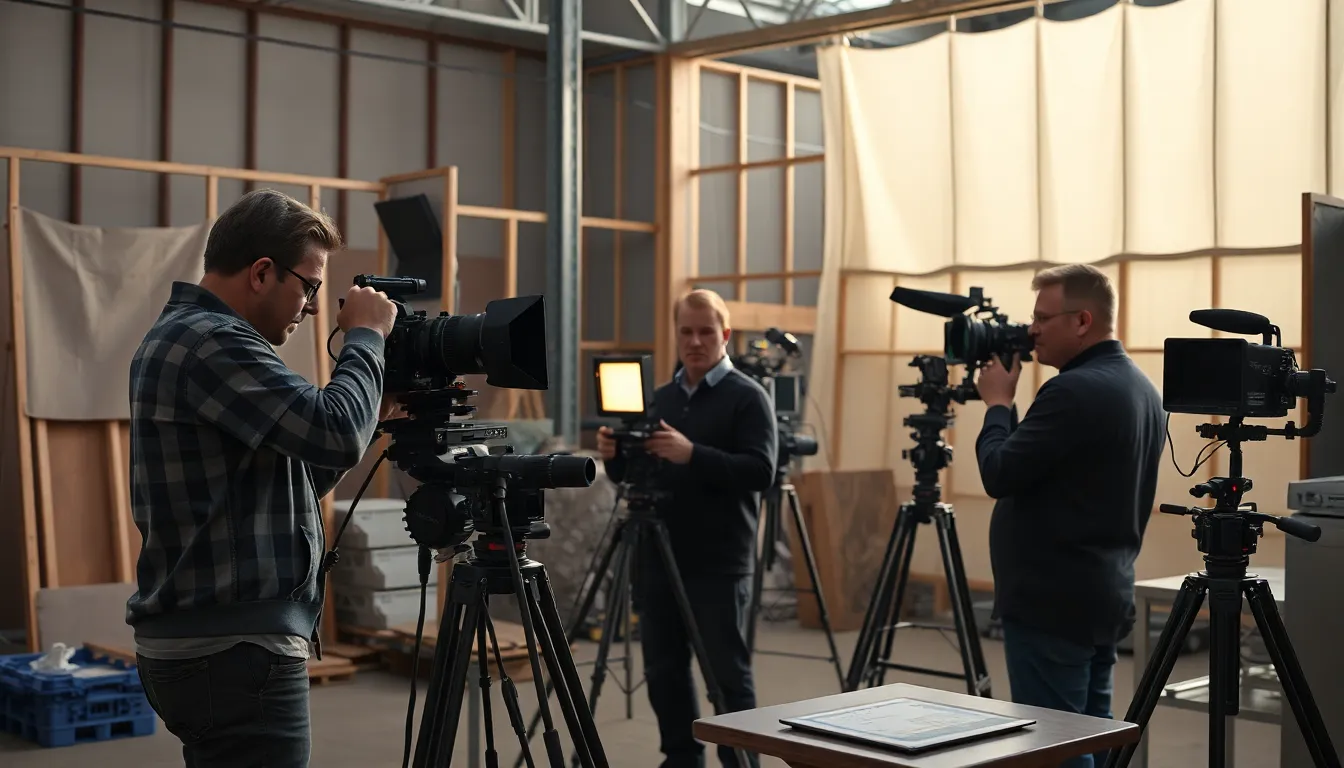Table of Contents
ToggleFilm analysis isn’t just for the critics in turtlenecks sipping overpriced coffee. It’s an adventure waiting to unfold for anyone who loves cinema. Imagine diving deep into the layers of storytelling, character development, and cinematography, all while discovering hidden gems that even your favorite movie buff might’ve missed.
Understanding Film Analysis
Film analysis involves examining various elements of a film to gain deeper insights into its message, style, and overall impact. This process enhances the viewing experience by allowing viewers to appreciate the complexities behind storytelling and visual presentation.
Definition of Film Analysis
Film analysis refers to the critical assessment of visual storytelling techniques, which include narrative structure, character arcs, and thematic content. By dissecting cinematography and sound design, analysts reveal how these elements work together to create an emotional response. Understanding film analysis equips viewers with the skills to interpret cinematic language, enabling connections between visual elements and narrative themes.
Importance of Film Analysis
Film analysis is essential for fostering critical thinking and enhancing appreciation for cinematic art. Engaging with films in this way uncovers layers of meaning often missed during casual viewing. Analyzing films cultivates awareness of cultural influences and societal reflections, allowing viewers to understand the zeitgeist represented in various genres. Moreover, exploring films through analysis strengthens communication skills, as articulating observations deepens personal insights and enriches discussions among peers.
Key Elements of Film Analysis

Film analysis encompasses several critical components that enhance understanding and appreciation of movies. By examining these elements, viewers gain deeper insights into a film’s craft and message.
Cinematography
Cinematography captures the visual essence of a film. Techniques like framing, lighting, and camera movement influence audience perception. Effective use of color can evoke specific emotions, while varying shot compositions guide viewers’ focus. For instance, close-ups on characters emphasize their emotions. Wide shots often establish the setting and context. Additionally, transitions between different shots create a dynamic visual experience. Understanding these techniques reveals how cinematography shapes storytelling and enhances thematic depth.
Editing Techniques
Editing techniques dictate the film’s pacing and structure. The choices made during editing can build tension or calm the narrative flow. Cutting between scenes establishes rhythm, drawing viewers into specific moments or flashbacks. Techniques like cross-cutting can illustrate parallel storylines, connecting characters and themes. Juxtaposition of contrasting shots amplifies emotional impact. Additionally, seamless cuts enhance immersion, while abrupt transitions can create shock. Analyzing editing reveals the invisible connections between scenes that contribute to a cohesive narrative.
Sound Design
Sound design plays a vital role in storytelling. Dialogue, sound effects, and music contribute to the atmosphere and emotional tone. Background sounds establish realism, immersing viewers in the film’s world. Diegetic sounds, like footsteps, ground the viewer in the narrative. Non-diegetic music can amplify emotions, enhancing key moments in the story. Silence, too, holds power, allowing for anticipation or reflection. Exploring sound design helps underscore how audio elements complement visual storytelling to create a captivating experience.
Approaches to Film Analysis
Film analysis employs several approaches to uncover deeper meanings and enhance the viewing experience. Each method offers unique insights into the story and emotional impact of a film.
Thematic Analysis
Thematic analysis focuses on identifying and exploring the central themes within a film. Common themes might include love, loss, identity, or societal issues. By analyzing these themes, viewers can discern how films reflect or challenge cultural norms and values. Films like “The Godfather” explore themes of power and family, while “Parasite” examines class disparity. This approach helps viewers connect personally to the narrative, revealing underlying messages that shape the film’s significance.
Character Analysis
Character analysis examines the motivations, development, and relationships of key figures throughout a film. Evaluating protagonists and antagonists provides insight into their complexities and transformation. For instance, in “Joker,” the character’s descent into madness illustrates societal neglect. Viewers can analyze character arcs to understand how individuals influence the narrative and interact with broader themes. This method deepens engagement with the film, as it allows for a more empathetic understanding of struggles and triumphs faced by characters.
Stylistic Analysis
Stylistic analysis scrutinizes the techniques and visual elements employed in filmmaking. This includes components like cinematography, editing, and sound design that create a film’s unique aesthetic. The camera angles in “Birdman,” for example, provide an immersive experience that enhances the narrative flow. By focusing on these stylistic choices, viewers grasp how filmmakers utilize visual language to enhance storytelling. Understanding these elements enhances appreciation for the craftsmanship behind films and emphasizes their emotional resonance.
Common Mistakes in Film Analysis
Film analysis invites viewers to engage deeply with cinematic art, yet some common mistakes can hinder this experience. Awareness of these pitfalls leads to richer interpretations.
Overlooking Context
Context enriches understanding in film analysis. Ignoring the historical backdrop, cultural influences, or filmmaker’s intent limits insights. For instance, analyzing “The Great Gatsby” without considering the Roaring Twenties neglects significant themes of wealth and class dynamics. Elements such as setting and societal issues also shape character behavior and narrative styles. Recognizing these factors allows viewers to appreciate subtle nuances that reflect broader narratives. Engaging with a film’s context deepens the connection between its story and the audience’s own experiences.
Focusing Too Much on Technical Aspects
Excessive focus on technical elements can detract from the overall narrative. While cinematography, sound design, and editing are critical, the emotional impact of a film often lies beyond these aspects. Focusing solely on techniques may lead to overlooking character motivations or thematic depth. For example, viewers might praise a film’s stunning visuals yet miss pivotal plot dynamics and emotional arcs. Balancing technical analysis with storytelling elements ensures a holistic appreciation that values both craftsmanship and the film’s core message. Recognizing this balance fosters a more enriching viewing experience.
Film analysis opens a world of understanding and appreciation for cinema. By exploring storytelling techniques and character development viewers can uncover layers of meaning that enhance their experience. Engaging with elements like cinematography and sound design allows for a deeper connection to the narrative.
Each approach to film analysis enriches the viewer’s perspective and encourages thoughtful discussions. Avoiding common pitfalls ensures a balanced appreciation of both technical aspects and emotional resonance. As viewers embrace the art of film analysis they not only enhance their viewing experience but also cultivate critical thinking skills that extend beyond the screen.




